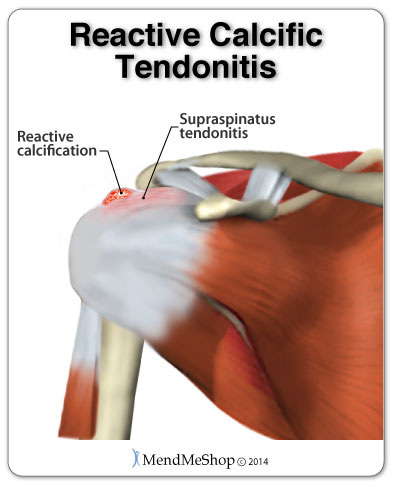Rotator cuff causes. Rotator Cuff Injury: Causes, Symptoms, and Treatment Options
What are the main causes of rotator cuff injuries. How can you recognize the symptoms of a rotator cuff tear. What treatment options are available for rotator cuff injuries. How can you prevent rotator cuff injuries. What is the recovery process like for rotator cuff injuries.
Understanding the Anatomy of the Rotator Cuff
The rotator cuff is a crucial component of the shoulder joint, playing a vital role in arm movement and stability. To fully comprehend rotator cuff injuries, it’s essential to understand the anatomy of this complex structure.
The shoulder joint consists of three main bones:
- Humerus (upper arm bone)
- Scapula (shoulder blade)
- Clavicle (collarbone)
The rotator cuff is a group of four muscles and their tendons that surround the head of the humerus, forming a “cuff” that helps to lift and rotate the arm. These muscles include:
- Supraspinatus
- Infraspinatus
- Teres minor
- Subscapularis
Between the rotator cuff and the acromion (the bony prominence at the top of the shoulder blade) lies a lubricating sac called the bursa. This structure allows the rotator cuff tendons to glide smoothly during arm movement.

Types of Rotator Cuff Injuries
Rotator cuff injuries can vary in severity and extent. Understanding the different types of injuries can help in proper diagnosis and treatment.
Partial Tears
A partial tear occurs when the tendon is damaged but not completely severed. The tendon remains attached to the bone, but its thickness is reduced. These tears can progress over time if left untreated.
Full-Thickness Tears
Full-thickness tears involve complete detachment of part of the tendon from the bone. These can be further classified into:
- Full-thickness incomplete tears: Only a small portion of the tendon is detached from the bone.
- Full-thickness complete tears: The entire tendon is detached from the bone, creating a hole in the rotator cuff.
Are full-thickness tears always more severe than partial tears? Not necessarily. The severity of a rotator cuff injury depends on various factors, including the size of the tear, its location, and how it affects shoulder function.
Common Causes of Rotator Cuff Injuries
Rotator cuff injuries can occur due to various reasons, ranging from acute trauma to gradual wear and tear. Understanding these causes can help in prevention and early intervention.

Acute Injuries
Sudden, traumatic events can lead to acute rotator cuff tears. These may include:
- Falling on an outstretched arm
- Lifting heavy objects with jerking motions
- Sudden, forceful arm movements
Acute tears often occur in conjunction with other shoulder injuries, such as dislocations or fractures.
Degenerative Tears
The majority of rotator cuff tears are degenerative, resulting from the natural aging process and wear over time. Factors contributing to degenerative tears include:
- Repetitive stress: Engaging in activities that involve repeated shoulder motions can lead to overuse injuries.
- Decreased blood supply: As we age, blood flow to the rotator cuff tendons diminishes, impairing the body’s ability to repair damage.
- Bone spurs: These can develop on the underside of the acromion, causing friction and irritation to the rotator cuff tendons.
Can degenerative tears be prevented? While some degree of wear is inevitable with age, maintaining good shoulder strength and flexibility can help reduce the risk of degenerative tears.
:max_bytes(150000):strip_icc()/the-rotator-cuff-2696385-FINAL1-474e476cc4554dbd97995610f4402577.png)
Recognizing Symptoms of Rotator Cuff Injuries
Identifying the symptoms of a rotator cuff injury is crucial for early diagnosis and treatment. Common signs include:
- Pain, especially when lifting or lowering the arm
- Weakness in the affected arm
- Limited range of motion
- Clicking or popping sensations during shoulder movement
- Difficulty sleeping on the affected side
Do all rotator cuff injuries cause immediate pain? Not always. Some tears, particularly degenerative ones, may develop gradually with minimal initial discomfort. However, as the tear progresses, symptoms typically become more noticeable.
Diagnosis and Imaging Techniques
Accurate diagnosis of rotator cuff injuries is essential for appropriate treatment. Healthcare providers employ various methods to assess the extent and nature of the injury.
Physical Examination
A thorough physical examination is the first step in diagnosing a rotator cuff injury. The healthcare provider will:
- Assess range of motion
- Test arm strength
- Perform specific maneuvers to evaluate rotator cuff function
Imaging Studies
Various imaging techniques can provide detailed information about the rotator cuff:

- X-rays: While they don’t show soft tissues, X-rays can reveal bone spurs or other skeletal abnormalities.
- Magnetic Resonance Imaging (MRI): This provides detailed images of soft tissues, allowing for precise assessment of rotator cuff tears.
- Ultrasound: A non-invasive method that can show tendon damage in real-time.
Is an MRI always necessary to diagnose a rotator cuff tear? Not always. In many cases, a combination of physical examination and less invasive imaging techniques like ultrasound can provide sufficient information for diagnosis.
Treatment Options for Rotator Cuff Injuries
The treatment approach for rotator cuff injuries depends on various factors, including the severity of the tear, the patient’s age, activity level, and overall health. Options range from conservative measures to surgical intervention.
Non-Surgical Treatments
Many rotator cuff injuries can be managed effectively without surgery. Non-surgical treatments include:
- Rest and activity modification
- Physical therapy to improve strength and flexibility
- Anti-inflammatory medications to reduce pain and swelling
- Corticosteroid injections for temporary pain relief
Surgical Interventions
When conservative measures fail to provide relief or in cases of large or complete tears, surgery may be recommended. Surgical options include:
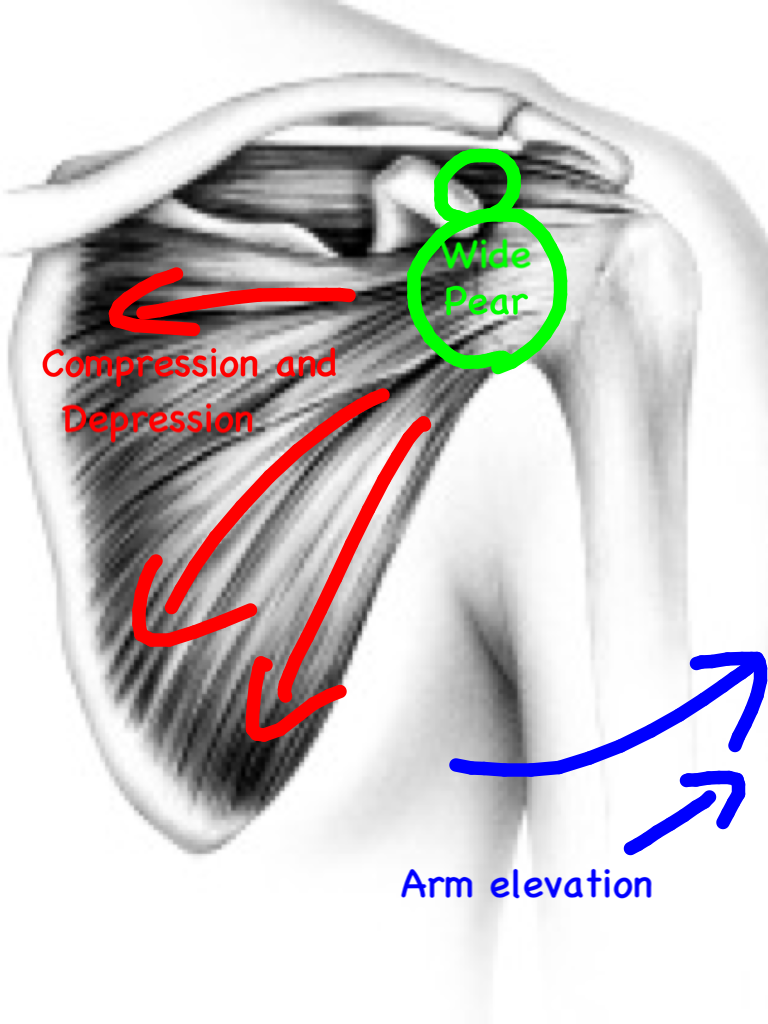
- Arthroscopic repair: Minimally invasive procedure using small incisions and a camera
- Open repair: Traditional surgery with a larger incision, typically used for complex tears
- Tendon transfer: Used when the torn tendon is too damaged to be repaired
How long does recovery take after rotator cuff surgery? Recovery time varies depending on the extent of the injury and the type of surgery performed. Generally, it can take several months to a year to regain full function and strength.
Rehabilitation and Recovery Process
Proper rehabilitation is crucial for optimal recovery from rotator cuff injuries, whether treated surgically or non-surgically. The rehabilitation process typically involves several phases:
Phase 1: Protection and Pain Control
The initial phase focuses on:
- Protecting the injured or repaired tendon
- Managing pain and inflammation
- Gentle passive range of motion exercises
Phase 2: Restoring Range of Motion
As healing progresses, the focus shifts to:
- Gradual increase in active range of motion
- Gentle strengthening exercises
- Scapular stabilization exercises
Phase 3: Strengthening and Functional Recovery
The final phase aims to:

- Progressively increase strength and endurance
- Improve functional movement patterns
- Prepare for return to normal activities or sports
Can rehabilitation speed up the recovery process? Yes, a well-structured and consistently followed rehabilitation program can significantly improve outcomes and potentially reduce recovery time.
Prevention Strategies for Rotator Cuff Injuries
While not all rotator cuff injuries can be prevented, several strategies can help reduce the risk of injury or re-injury:
- Maintain good posture: Proper alignment reduces stress on the shoulder joint.
- Strengthen shoulder muscles: A balanced exercise program can improve stability and function.
- Avoid repetitive overhead activities: If unavoidable, take frequent breaks and use proper form.
- Warm up before physical activities: This prepares the muscles and tendons for exertion.
- Listen to your body: Avoid pushing through pain, as this can lead to further injury.
Is it possible to completely eliminate the risk of rotator cuff injuries? While no prevention strategy is foolproof, consistently applying these measures can significantly reduce the likelihood of injury, especially as we age.
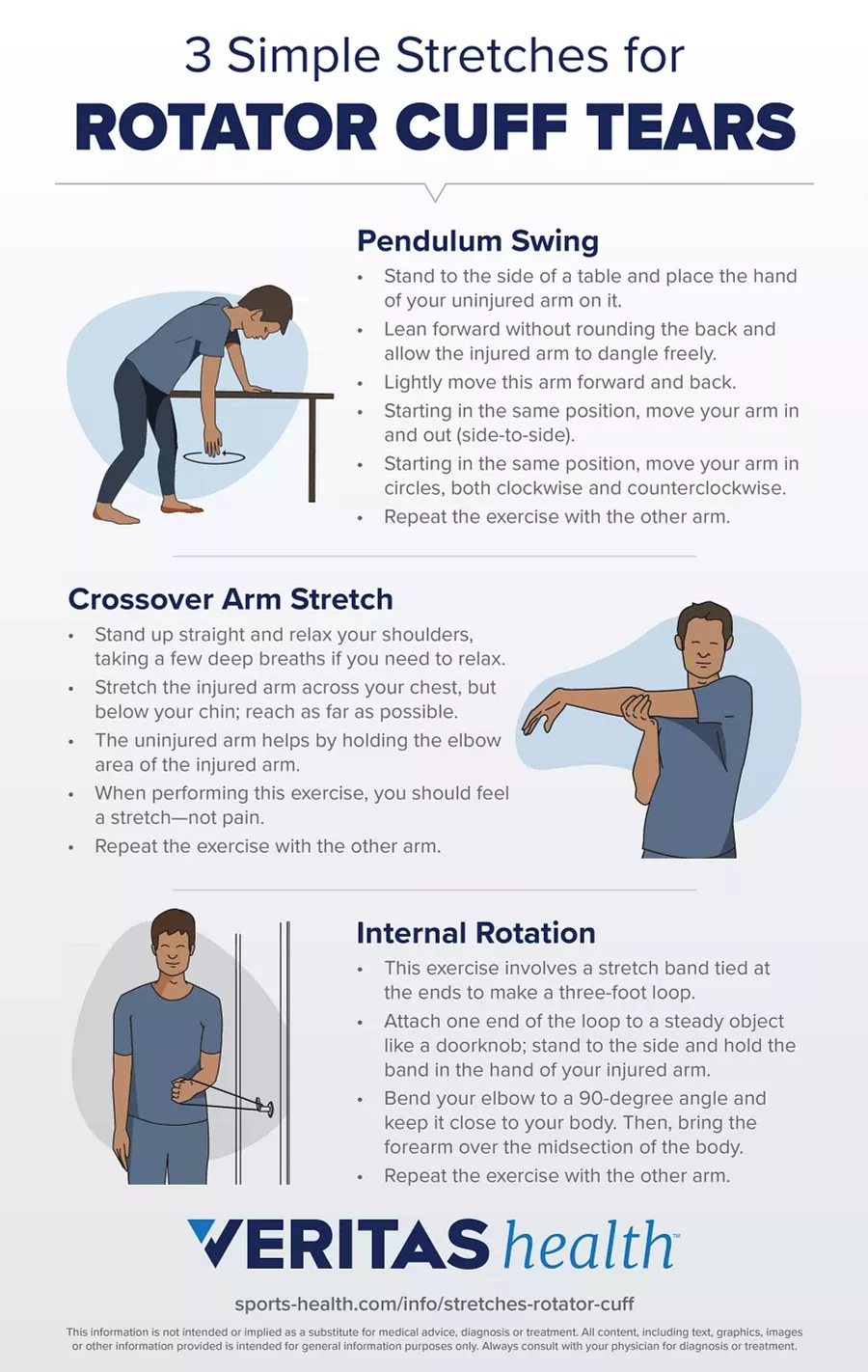
Understanding the complexities of rotator cuff injuries, from their causes and symptoms to treatment options and prevention strategies, is crucial for maintaining shoulder health. Whether you’re an athlete, a manual laborer, or simply someone concerned about shoulder function, this knowledge can help you make informed decisions about your shoulder health and seek appropriate care when needed. Remember, early intervention and proper management are key to optimal outcomes in rotator cuff injuries.
Rotator Cuff Tears – OrthoInfo
A rotator cuff tear is a common cause of shoulder pain and disability among adults. Each year, almost 2 million people in the United States visit their doctors because of rotator cuff tears.
A torn rotator cuff may weaken your shoulder. This means that many daily activities, like combing your hair or getting dressed, may become painful and difficult to do.
Your shoulder is made up of three bones: the upper arm bone (humerus), the shoulder blade (scapula), and the collarbone (clavicle). The shoulder is a ball-and-socket joint: The ball, or head, of the upper arm bone fits into a shallow socket in the shoulder blade.
This illustration of the shoulder highlights the major components of the joint.
Your arm is kept in your shoulder socket by the rotator cuff. The rotator cuff is a group of four muscles that come together as tendons to form a covering around the head of the humerus. The rotator cuff attaches the humerus to the shoulder blade and helps to lift and rotate your arm.
The rotator cuff tendons cover the head of the humerus (upper arm bone), helping you to raise and rotate your arm.
There is a lubricating sac called a bursa between the rotator cuff and the bone on top of the shoulder (acromion). The bursa allows the rotator cuff tendons to glide freely when you move your arm. When the rotator cuff tendons are injured or damaged, this bursa can also become inflamed and painful.
When one or more of the rotator cuff tendons is torn, the tendon becomes partially or completely detached from the head of the humerus.
In most rotator cuff tears, the tendon is torn away from the bone.
Most tears occur in the supraspinatus tendon, but other parts of the rotator cuff may also be involved.
In many cases, torn tendons begin by fraying. As the damage progresses, the tendon can completely tear, sometimes with lifting a heavy object.
There are different types of tears.
- Partial tear. This type of tear does not completely detach the tendon from the bone.
 It is called partial because the tear goes only partially through the thickness of the tendon. The tendon is still attached to the bone, but it is thinned.
It is called partial because the tear goes only partially through the thickness of the tendon. The tendon is still attached to the bone, but it is thinned. - Full-thickness tear. With this type of tear, there is detachment of part of the tendon from the bone.
- When only a small part of the tendon is detached from the bone, it is referred to as a full-thickness incomplete tear.
- When a tendon is completely detached from the bone, it is referred to as a full-thickness complete tear. With a full-thickness complete tear, there is basically a hole in the tendon.
(Left) Overhead view of the four tendons that form the rotator cuff.
(Right) A full-thickness tear in the supraspinatus tendon.
(Left) The front view of a normal rotator cuff. (Right) A full-thickness tear in the supraspinatus tendon.
There are two main causes of rotator cuff tears: injury and wear (degeneration).
Acute Tear
If you fall down on your outstretched arm or lift something too heavy with a jerking motion, you can tear your rotator cuff. This type of tear can occur with other injuries, such as a broken collarbone, a dislocated shoulder, or a wrist fracture.
Degenerative (Wear-Related) Tear
Most tears are the result of a wearing down of the tendon that occurs slowly over time. This degeneration naturally occurs as we age and in most cases is relatively painless.
Rotator cuff tears are more common in the dominant arm — the arm you prefer to use for most tasks. If you have a degenerative tear in one shoulder, there is a greater likelihood of a rotator cuff tear in the opposite shoulder — even if you have no pain in that shoulder.
Several factors contribute to degenerative, or chronic, rotator cuff tears.
- Repetitive stress. Repeating the same shoulder motions again and again can stress your rotator cuff muscles and tendons.
 Baseball, tennis, rowing, and weightlifting are examples of activities that can put you at risk for overuse tears. Many jobs and routine chores can cause overuse tears, as well.
Baseball, tennis, rowing, and weightlifting are examples of activities that can put you at risk for overuse tears. Many jobs and routine chores can cause overuse tears, as well. - Lack of blood supply. As we get older, the blood supply in our rotator cuff tendons lessens. Without a good blood supply, the body’s natural ability to repair tendon damage is impaired. This can ultimately lead to a tendon tear.
Risk Factors
Because most rotator cuff tears are largely caused by the normal wear and tear that goes along with aging, people over 40 are at greater risk.
People who do repetitive lifting or overhead activities are also at risk for rotator cuff tears. Athletes are especially vulnerable to overuse tears, particularly tennis players and baseball pitchers. Painters, carpenters, and others who do overhead work also have a greater chance for tears.
Although overuse tears caused by sports activity or overhead work also occur in younger people, most tears in young adults are caused by a traumatic injury, like a fall.
The most common symptoms of a rotator cuff tear include:
- Pain at rest and at night, particularly if lying on the affected shoulder
- Pain when lifting and lowering your arm or with specific movements
- Weakness when lifting or rotating your arm
- Crepitus, or a crackling sensation, when moving your shoulder in certain positions
Tears that happen suddenly, such as from a fall, usually cause intense pain. There may be a snapping sensation and immediate weakness in your upper arm.
Tears that develop slowly due to overuse may also cause pain and arm weakness. You may have pain in the shoulder when you lift your arm, or pain that moves down your arm.
- At first, the pain may be mild and present only when lifting your arm over your head, such as reaching into a cupboard. Over-the-counter medication, such as aspirin, ibuprofen, or naproxen, may relieve the pain.
- Over time, the pain may become more noticeable at rest and no longer goes away with medications.
 You may have pain when you lie on the painful side at night. The pain and weakness in the shoulder may make routine activities, such as combing your hair or reaching behind your back, more difficult.
You may have pain when you lie on the painful side at night. The pain and weakness in the shoulder may make routine activities, such as combing your hair or reaching behind your back, more difficult.
It should be noted that some rotator cuff tears are not painful. These tears, however, may still result in arm weakness and other symptoms.
To Top
Medical History and Physical Examination
After discussing your symptoms and medical history, your doctor will examine your shoulder.
- They will check to see whether it is tender in any area or whether there is a deformity.
- They will have you move your arm in several different directions to measure the range of motion of your shoulder.
- They will test your arm strength.
Your doctor will test your range of motion by having you move your arm in different directions.
Reproduced with permission from JF Sarwark, ed: Essentials of Musculoskeletal Care, ed 4. Rosemont, IL, American Academy of Orthopaedic Surgeons, 2010.
Rosemont, IL, American Academy of Orthopaedic Surgeons, 2010.
- They will check for other problems with your shoulder joint.
- They may also examine your neck to make sure that the pain is not coming from a pinched nerve, and to rule out other conditions, such as arthritis.
Imaging Tests
Other tests which may help your doctor confirm your diagnosis include:
- X-rays. The first imaging tests performed are usually X-rays. Because X-rays do not show the soft tissues of your shoulder like the rotator cuff, plain X-rays of a shoulder with rotator cuff pain are usually normal and may show a small bone spur, which is a normal finding. The reason X-rays are done is to make sure you don’t have other reasons for your shoulder pain, such as arthritis.
- Magnetic resonance imaging (MRI) or ultrasound. An MRI can better show soft tissues, like the rotator cuff tendons, than an X-ray. It can show the rotator cuff tear, as well as where the tear is located within the tendon and the size of the tear.
 An MRI can also give your doctor a better idea of how old or new a tear is because it can show the quality of the rotator cuff muscles.
An MRI can also give your doctor a better idea of how old or new a tear is because it can show the quality of the rotator cuff muscles.
If you have a rotator cuff tear and keep using it despite increasing pain, you may cause further damage. A rotator cuff tear can get larger over time.
Chronic shoulder and arm pain are good reasons to see your doctor. Early treatment can prevent your symptoms from getting worse. It will also get you back to your normal routine quicker.
The goal of any treatment is to reduce pain and restore function. There are several treatment options for a rotator cuff tear, and the best option is different for every person. In planning your treatment, your doctor will consider:
- Your age
- Your activity level
- Your general health
- The type of tear you have
There is no evidence of better results from surgery performed near the time of injury versus later on. For this reason, many doctors first recommend management of rotator cuff tears with physical therapy and other nonsurgical treatments.
Nonsurgical Treatment
In about 80 to 85% of patients, nonsurgical treatment relieves pain and improves function in the shoulder.
Nonsurgical treatment options may include:
- Rest. Your doctor may suggest rest and limiting overhead activities.
- Activity modification. Avoid any activities that cause shoulder pain.
- Nonsteroidal anti-inflammatory drugs (NSAIDs). Anti-inflammatory drugs like ibuprofen, aspirin, and naproxen can reduce pain and swelling.
- Strengthening exercises and physical therapy. Specific exercises will restore movement and strengthen your shoulder. Your exercise program will include stretches to improve flexibility and range of motion. Strengthening the muscles that support your shoulder can relieve pain and prevent further injury.
- Steroid injection. If rest, medications, and physical therapy do not relieve your pain, an injection of a local anesthetic combined with cortisone may be helpful.
 Cortisone is a very effective anti-inflammatory medicine; however, it is not effective for all patients. And if it is effective for you, there is no way to know how long the effects will last; it may be weeks, months, years, or possibly the rest of your life. On average, injections can be expected to provide pain relief in about two-thirds of patients for a period of at least 3 months.
Cortisone is a very effective anti-inflammatory medicine; however, it is not effective for all patients. And if it is effective for you, there is no way to know how long the effects will last; it may be weeks, months, years, or possibly the rest of your life. On average, injections can be expected to provide pain relief in about two-thirds of patients for a period of at least 3 months.
A cortisone injection may relieve painful symptoms.
The chief advantage of nonsurgical treatment is that it avoids the major risks of surgery, such as:
- Infection
- Permanent stiffness
- Anesthesia complications
- Sometimes lengthy recovery time
The disadvantages of nonsurgical treatment are:
- The size of the tear may increase over time.
- You may need to limit activities.
Surgical Treatment
Your doctor may recommend surgery if your pain does not improve with nonsurgical methods. Continued pain is the main indication for surgery.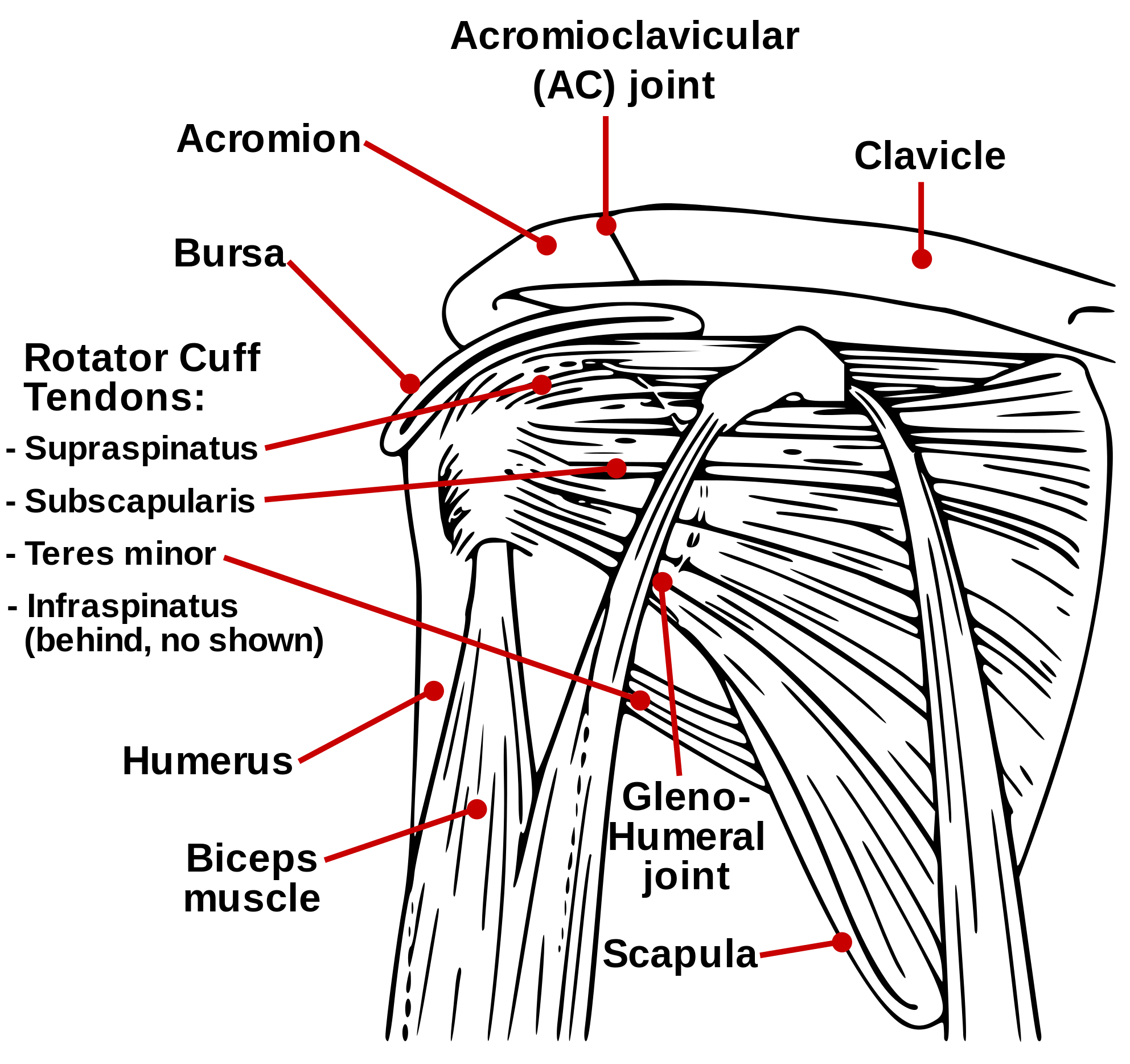 However, your doctor may also suggest surgery if you are very active and/or use your arms for overhead work or sports.
However, your doctor may also suggest surgery if you are very active and/or use your arms for overhead work or sports.
Other signs that surgery may be a good option for you include:
- Your symptoms have lasted 6 to 12 months
- You have a large tear (more than 3 cm) and the quality of the surrounding tissue is good
- You have significant weakness and loss of function in your shoulder
- Your tear was caused by a recent, acute injury
Surgery to repair a torn rotator cuff most often involves re-attaching the tendon to the head of humerus (upper arm bone). There are a few options for repairing rotator cuff tears. Your orthopaedic surgeon will discuss with you the best procedure to meet your individual health needs.
Continue to next page: Rotator Cuff Tears: Surgical Treatment Options
To assist doctors in the management of rotator cuff tears, the American Academy of Orthopaedic Surgeons has conducted research to provide some useful guidelines.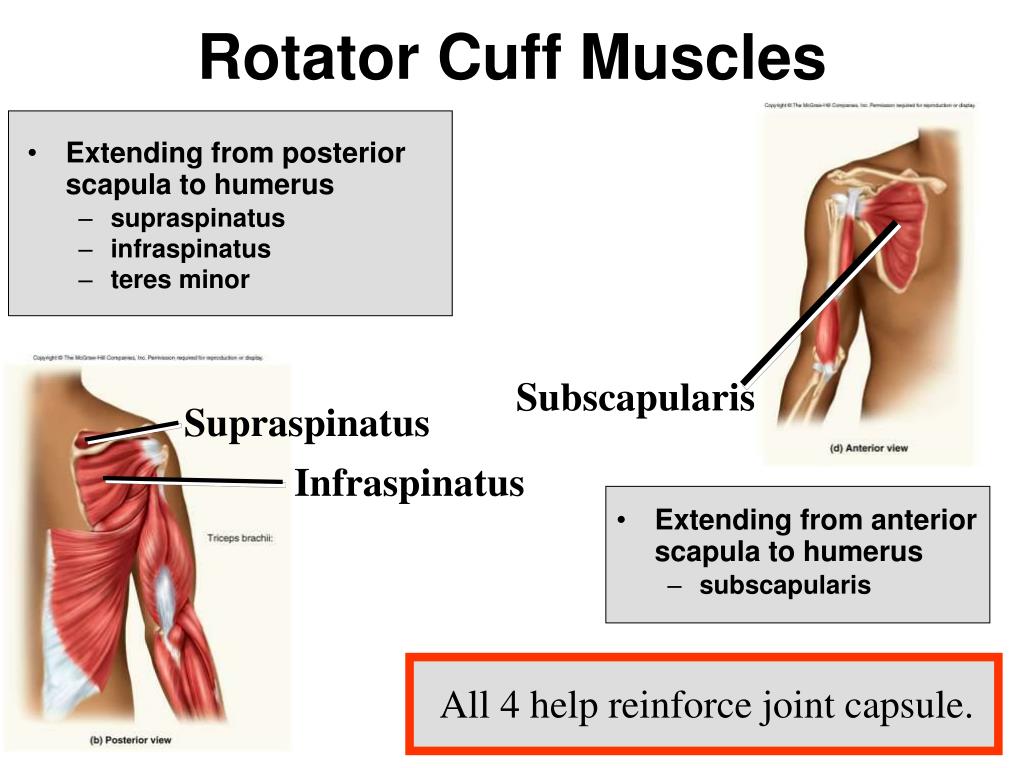 These are recommendations only and may not apply to every case. For more information: Plain Language Summary – Clinical Practice Guideline – Management of Rotator Cuff Injuries – AAOS
These are recommendations only and may not apply to every case. For more information: Plain Language Summary – Clinical Practice Guideline – Management of Rotator Cuff Injuries – AAOS
To Top
Information on this topic is also available as an OrthoInfo Basics PDF Handout.
For more information:
Basics Handouts
Rotator Cuff Injury | Cedars-Sinai
ABOUT
CAUSES
DIAGNOSIS
TREATMENT
NEXT STEPS
What is a rotator cuff injury?
Your rotator cuff consists of
muscles and tendons that hold your shoulder in place. It’s one of the most important
parts of your shoulder.
Your rotator cuff allows you to
lift your arms and reach up. Each year, millions of people in the U.S. go to their
healthcare providers because of a rotator cuff problem. A rotator cuff tear is a common
A rotator cuff tear is a common
cause of pain and disability among adults.
What causes a rotator cuff injury?
Injury and degeneration are the 2
main causes of rotator cuff tears. An injury to the rotator cuff, such as a tear,
may
happen suddenly when falling on an outstretched hand. It may also develop over time
due
to repetitive activities. Rotator cuff tears can also happen due to the breakdown
(degeneration) of the tissues, which may happen as part of the aging process.
What are the symptoms of rotator cuff tear?
Symptoms may be a bit different for
each person. Symptoms may include:
- Pain that keeps coming back,
especially when doing certain things, such as lifting over your head - Pain that prevents you from sleeping on your injured side
- Grating or cracking sounds when moving your arm
- Limited ability to move your arm
- Muscle weakness
The symptoms of a rotator cuff tear
may be caused by other conditions or health problems.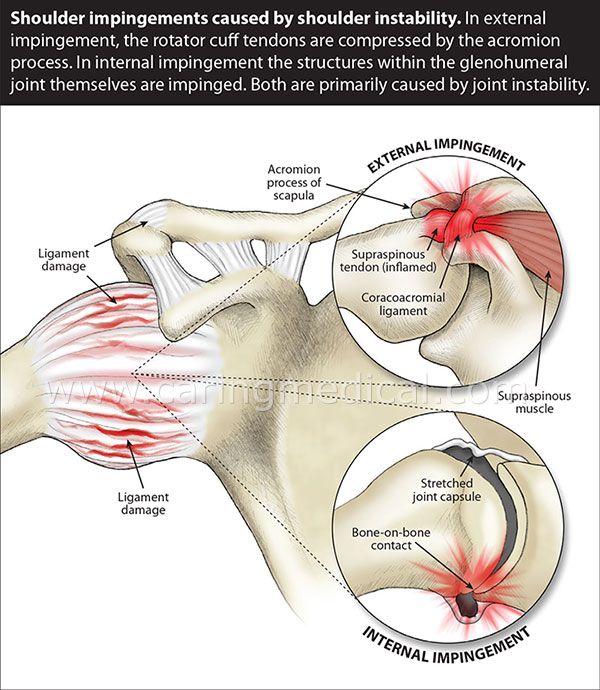 Always talk with your healthcare
Always talk with your healthcare
provider for a diagnosis.
How is a rotator cuff injury diagnosed?
Your healthcare provider will take
a complete health history and do a physical exam. You may also have diagnostic tests,
such as:
- X-ray. This test uses invisible
electromagnetic energy beams to make images of internal tissues, bones, and organs
on
film. - MRI. This test uses a combination of
large magnets, radiofrequencies, and a computer to make detailed images of organs
and
structures within the body.
A rotator cuff may tear partly or
fully. Partial-thickness tears don’t completely remove the tendon from the shoulder.
How is a rotator cuff injury treated?
Treatment will depend on your symptoms, age, and general health.
It’ll also depend on how severe the condition is.
Treatment may include:
- Rest
- Nonsteroidal anti-inflammatory drugs
(NSAIDs) - Strengthening and stretching
exercises - Ultrasound therapy
- Corticosteroid shot (injection)
- Surgery for severe injuries or
tears
When should I call my healthcare provider?
Call your provider if:
- Your pain gets worse or starts to
interfere with your normal activities or ability to sleep well - You can’t use your shoulder like you
used to
Key points about rotator cuff injury
- Your rotator cuff is one of the most
important parts of your shoulder. It allows you to lift your arms and reach up.
It allows you to lift your arms and reach up. - Injury and breakdown (degeneration)
are the 2 main causes of rotator cuff tears. - Symptoms may include pain that keeps
coming back, muscle weakness, limited ability to move your arm, and grating or
cracking sounds when moving your arm. - Treatment may include rest, medicine, strengthening and
stretching exercises, and surgery. - Call your healthcare provider if pain gets worse or you can’t
use your arm like you used to.
Next steps
Tips to help you get the most from a visit to your healthcare provider:
- Know the reason for your visit and what you want to happen.
- Before your visit, write down questions you want answered.

- Bring someone with you to help you ask questions and remember what your provider tells
you. - At the visit, write down the name of a
new diagnosis and any new medicines, treatments, or tests. Also write down any new
instructions your provider gives you. - Know why a new medicine or treatment
is prescribed and how it will help you. Also know what the side effects are. - Ask if your condition can be treated in other ways.
- Know why a test or procedure is recommended and what the results could mean.
- Know what to expect if you don’t take
the medicine or have the test or procedure. - If you have a follow-up appointment, write down the date, time, and purpose for that
visit.
- Know how you can contact your provider
if you have questions.
Medical Reviewer: Thomas N Joseph MD
Medical Reviewer: Raymond Turley Jr PA-C
Medical Reviewer: Stacey Wojcik MBA BSN RN
© 2000-2022 The StayWell Company, LLC. All rights reserved. This information is not intended as a substitute for professional medical care. Always follow your healthcare professional’s instructions.
Treatment. Shoulder joint. Rotator cuff injuries company blog
Description of the disease, symptoms and causes, methods of treatment.
Damage to the rotator cuff of the shoulder joint is a pathological condition characterized by the presence of local inflammation in the tendons of the muscle group involved in the movement of the shoulder joint. Often this disease is combined with the term “tenopathy”, which in some respects can be used as a synonym. According to WHO statistics, about 40% of the adult population of the world suffer from various types of tenopathy that lead to damage to the rotator cuff of the shoulder joint.
The pathogenetic basis for the development of the disease is associated with primary inflammation, necro-dystrophic changes occurring in the tendon tissue. Emerging foci of dystrophy quickly develop into necrosis, in place of which connective tissue quickly grows. As a result, the elastic tissue of the tendons loses its functional properties, also provoking further patho-biochemical changes. As the disease progresses, ruptures are observed during injury, i.e. damage to the rotational (rotator) cuff of the shoulder joint. a number of scientists refer to the development of tenopathy due to autoimmune diseases that occur latently in the human body. At present, due to the development of diseases, constantly inflicted microtraumas and anatomical features of the blood supply to the tendons of the muscles of the shoulder joint are brought to the fore.
Symptoms
The clinical symptoms of damage to the rotational (rotator) cuff of the shoulder joint manifest themselves depending on the severity of the injury.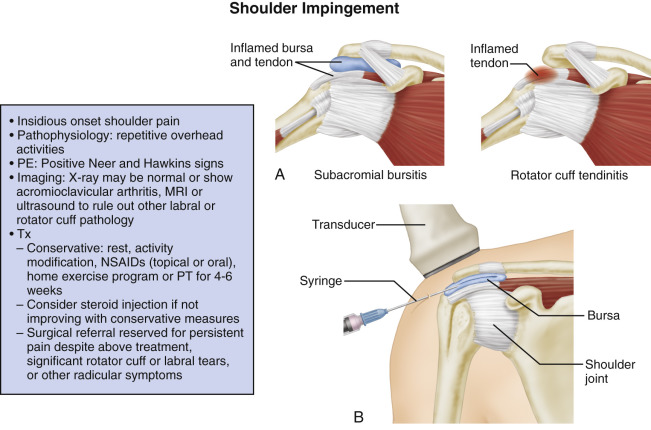 if there is a complete rupture of one of the tendons, the patient complains of pain, mobility in the shoulder joint is limited, it may even be completely absent due to the localization of damage. If an incomplete rupture has occurred, i.e., a tear of the tendon, the clinic of damage is moderate.
if there is a complete rupture of one of the tendons, the patient complains of pain, mobility in the shoulder joint is limited, it may even be completely absent due to the localization of damage. If an incomplete rupture has occurred, i.e., a tear of the tendon, the clinic of damage is moderate.
Swelling of the shoulder joint is usually small. To make a diagnosis, the clinic of pathological standing is atypical and requires an additional examination. Currently, for a detailed layer-by-layer study of the tissues of the shoulder joint, tomography is successfully used to assess the presence of tendon defects.
Depending on the severity and completeness of the rupture, the doctor prescribes conservative or surgical treatment for damage to the rotator cuff of the shoulder joint. It should be noted that due to the pathogenetic basis of the development of the disease, the treatment is long with a smoothly transitional course of rehabilitation. In general, it does not cause discomfort for the patient, taking into account modern methods and developments.
Conservative treatment
Conservative treatment of patients with injuries of the rotator cuff of the shoulder joint is indicated for the first and second degrees of damage (partial or small tears) and when movements in the shoulder joint are preserved. When a partial tear of the tendon occurs. In this case, a set of measures is assigned:
peace;
non-steroidal anti-inflammatory drugs;
tire overlay;
After pain relief, light physical exercises are prescribed to develop the joint. In a later period, strength exercises are added to these exercises aimed at strengthening the muscles of the upper limb.
The term of conservative therapy is from 6 to 8 weeks.
Surgical treatment
Repairing a torn rotator cuff tendon is a fairly complex operation. Reconstruction of the rotator cuff can be performed both openly through an incision on the anterior surface of the shoulder, and arthroscopically.
In the third degree of damage with a large defect (up to 3 cm or more), a good result is achieved by arthroscopic subacromial decompression, fixation of the gap with suturing and the use of so-called “anchors”.
Indications for surgery:
- complete rupture that limits or prevents movement of the shoulder joint;
- partial rupture that restricts movement and causes pain;
- conservative treatment was unsuccessful.
The essence of the operation: the rupture is sutured, and if the tendon is torn off from the place of fixation, then I perform a suture using special “anchor” fixators. At the first stage of the operation, all non-viable, degenerative tissues of the rotator cuff are removed. Then, the area of the humerus where the rotator cuff was torn or torn off is cleared of soft tissue remnants in order for the tendon to grow.
Rotator Cuff – KinesioPro
The Rotator Cuff (RCA) is the collective name for a group of 4 individual muscles and their tendons that provide strength and stability during movement of the shoulder complex.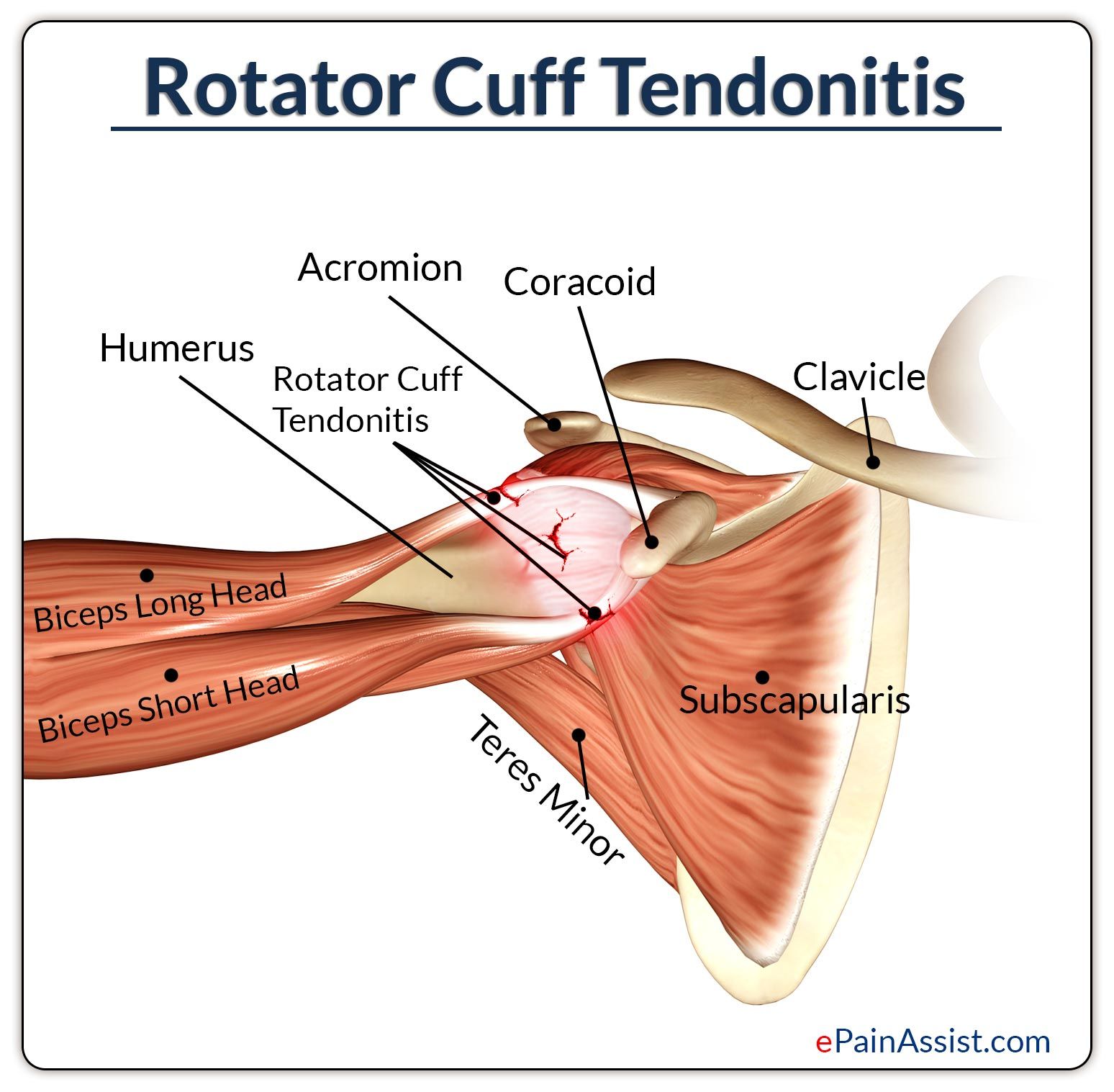 They are also referred to as SITS muscles, in reference to the first letter of their name (Supraspinatus/Supraspinatus, Infraspinatus/Infraspinatus, Teres Minor/Teres Minor and Subscapularis/Subscapularis). All these muscles start from the shoulder blade and connect to the head of the humerus, forming a cuff around the glenohumeral joint.
They are also referred to as SITS muscles, in reference to the first letter of their name (Supraspinatus/Supraspinatus, Infraspinatus/Infraspinatus, Teres Minor/Teres Minor and Subscapularis/Subscapularis). All these muscles start from the shoulder blade and connect to the head of the humerus, forming a cuff around the glenohumeral joint.
Anatomy
| Muscles | Start on shoulder blade | Humerus Attachment | Basic function |
| Supraspinatus | Supraspinatus fossa | Superior facet of greater tubercle of humerus | Lead |
| Infraspinatus | Infraspinatus fossa | Middle facet of greater tubercle of humerus | External rotation |
| teres minor | Lateral edge of the scapula | Inferior facet of greater tubercle of humerus | External rotation |
| Subscapularis | Subscapular fossa | Lesser tubercle of the humerus | Internal rotation |
Cranial (i. e. above) the rotator cuff there is a bursa/bursa that covers and protects the muscles and tendons as they are in close contact with the surrounding bony structures.
e. above) the rotator cuff there is a bursa/bursa that covers and protects the muscles and tendons as they are in close contact with the surrounding bony structures.
Function
The bladder muscles are involved in
various movements of the upper limbs, including flexion, abduction, internal
and external rotation. They are important participants in almost every type
shoulder movements. Balanced strength and flexibility in each of the four muscles
vital to maintaining the functioning of the entire shoulder girdle.
As a group, the rotator cuff muscles are responsible for stabilizing the shoulder joint by providing “fine tuning” for the movement of the humeral head within the glenoid cavity of the scapula. They are deeper muscles and are very active in terms of neuromuscular control of the shoulder complex during upper limb movements.
Friends, this and other questions will be dealt with in detail at the seminar Diagnosis and Therapy of Problems of the Shoulder-Scapular Complex.
They hold the head
humerus within the small glenoid cavity of the scapula to increase
range of motion in the shoulder joint and avoid mechanical obstruction (i.e.
possible biomechanical pinching (impingement) during arm lifting).
It is well known that bladder muscle dysfunction can lead to shoulder pain, functional impairment and reduced quality of life.
Common injuries of the rotator cuff
Injuries of BC are
frequent injuries that can occur at any age. In younger
In humans, most injuries occur secondary to injury or occur
due to excessive use of the hands in the upper position (for example, volleyball,
tennis, pitching [in baseball]). The incidence of injury increases with age, however,
some people with rotator cuff disease can live without symptoms.
RMP muscles can fall down due to muscle degeneration, impingement
and any other mechanical damage. Non-ideal biomechanics (for example,
anterior position of the shoulder joint in the glenoid cavity) may prematurely
affect the quality of muscles and tendons of RMP due to repetitive microdamage
fabrics.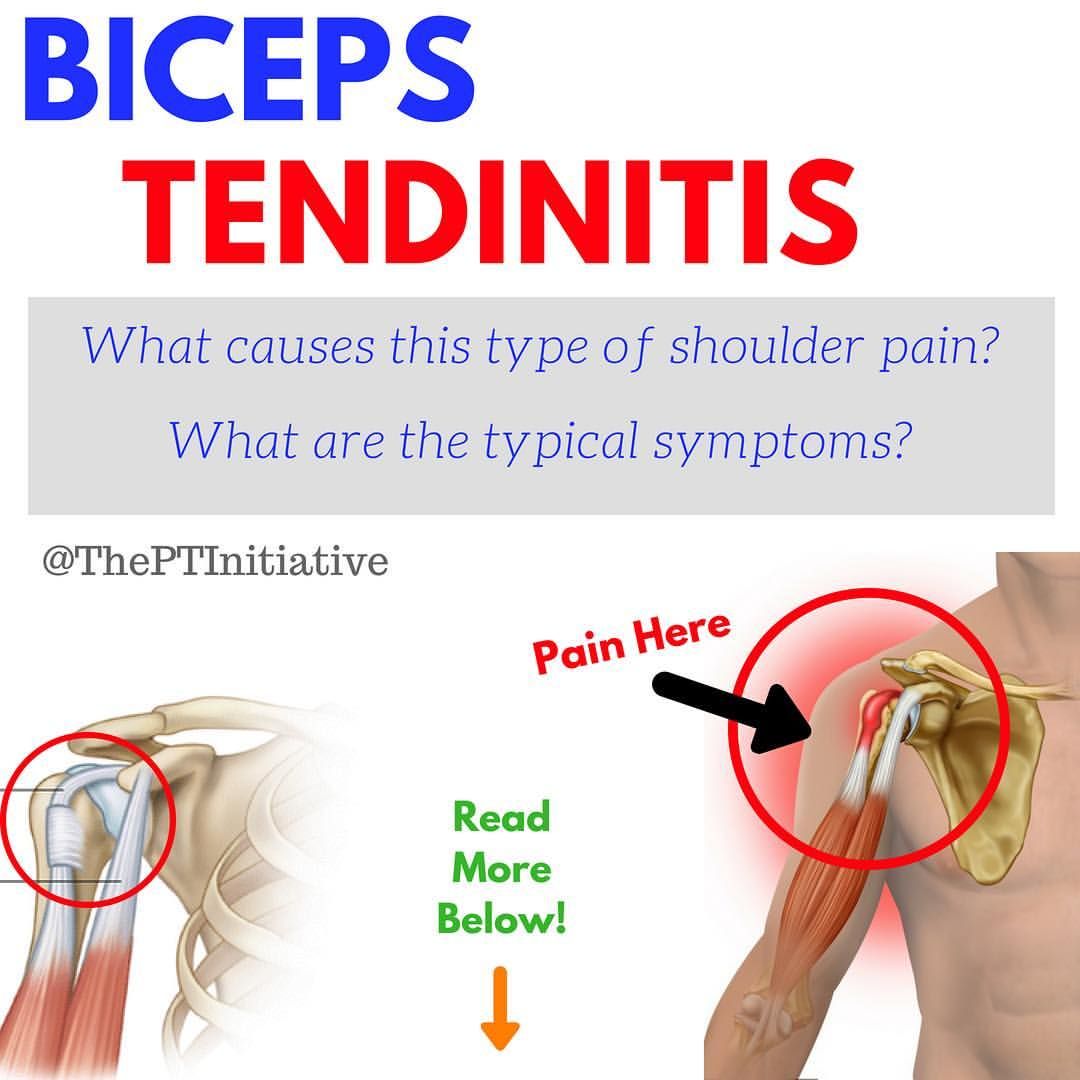
Most
common rotator cuff injuries are:
- Tears (micro or macro tears of muscles or tendons).
- Tendinitis and tendinopathy (acute and chronic soft tissue disease).
- Impingement syndrome (biomechanical dysfunction of the shoulder complex, leading to abnormal wear of the soft tissues of the BC).
Clinical picture
It is important to note that
RBC ruptures or injuries are not always associated with pain or loss of patient function.
In addition, there is the observation that asymptomatic patients may develop symptoms
within a relatively short period of time.
Most
common signs of rotator cuff injury are:
- Pain (may or may not be present)
be present). May be localized in the anterior/lateral part of the shoulder, with irradiation
down the side of the arm. - Painful movements:
- Painful arc (degrees vary – usually
above shoulder level).
- Painful external/internal rotation/abduction.

- Painful arc (degrees vary – usually
- Muscle weakness (especially with abduction and external rotation).
- Difficulty in lifting and pushing, inability to
activity of the arms above the head and movements of the arm behind the back (internal rotation)).
These signs are mainly due to loss of stability of the shoulder joint due to dysfunction of the rotator cuff muscles.
Diagnostics of pathologies of the rotor cuff
The key elements in the diagnosis of RMP pathologies are:
The history of the patient’s disease
- Age/Paul/Concomitant diseases (diabetes/smoking/Pain in the shoulder/pain in the neck of the spine).
- Participation in sports activities (contact sports/sports with arm movements above head level).
- Mechanism of injury (acute injury (such as: “Fell on outstretched arm”/trauma or repetitive strain).
Physical examination
- and thoracic spine.
- Cervical spine scan
(exclude radiating pain and/or radiculopathy).
- Palpation
(pain/deformity/swelling). - Amplitude
movements/functional movements. - Muscle strength assessment (manual testing or
using a dynamometer).
Clinical tests:
the diagnosis of BC tendinopathy can be made in the clinic using
cluster tests. The following cluster tests were proposed by Roy et al. (2015):
- Hawkins-Kennedy test.
- Test Neer.
- Test
painful arc. - Empty can test.
- Pain or weakness with external rotation.
- Tool
diagnostics:- X-ray examination (less accurate for
diagnosis of RMP damage; if there is no suspicion of an avulsive fracture, calcification,
arthritis or bone deformity).
- MRI (best choice for soft tissue imaging).
- Ultrasonic
study.
- X-ray examination (less accurate for
See also the article: Shoulder subluxation.
It is important to distinguish pain in
shoulder extending from other locations such as the neck (reflected cervical or
chest pain) or elbow joint, as well as pain due to damage to other structures
shoulder joint.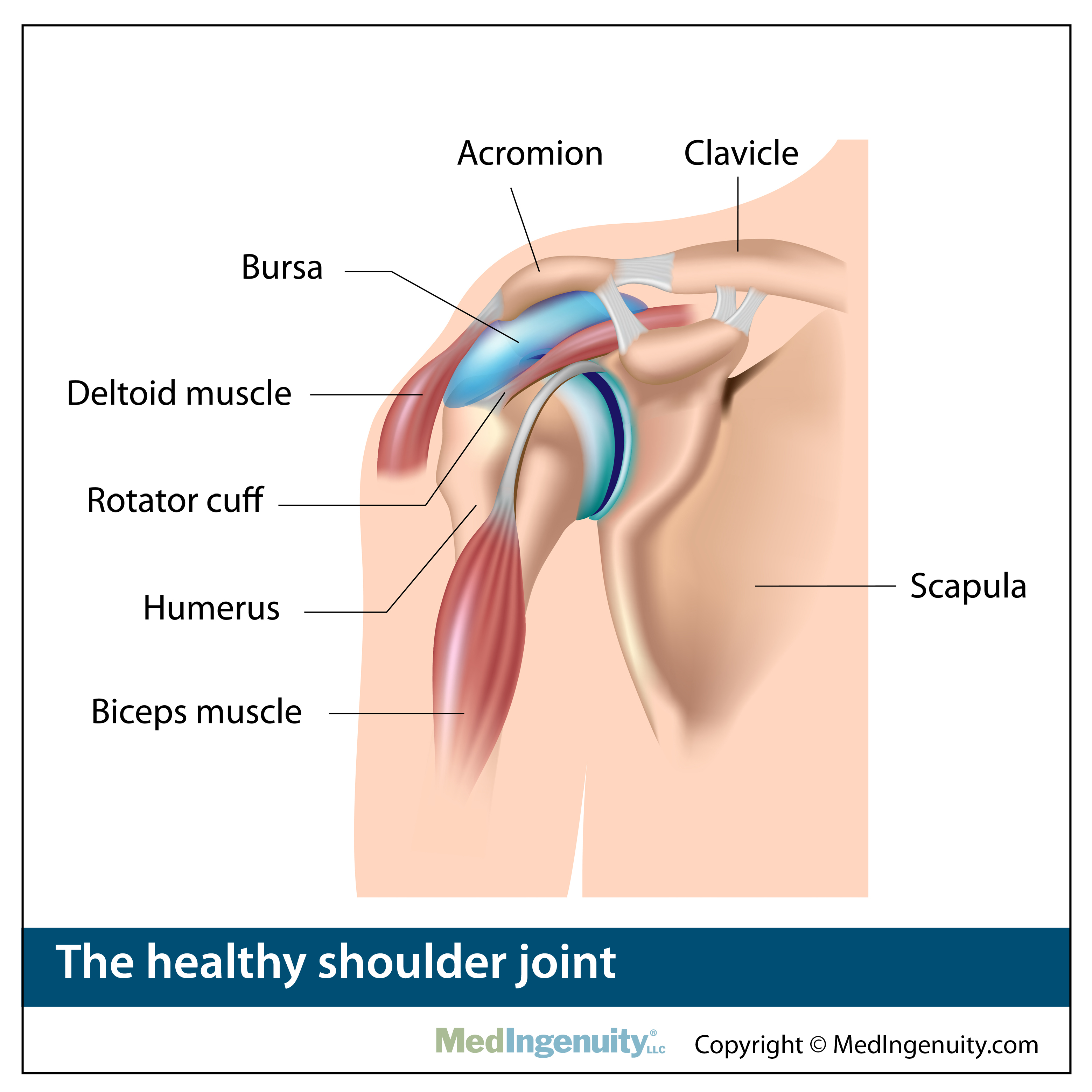 The pain is mainly provoked by the movements of the hands above the head and
The pain is mainly provoked by the movements of the hands above the head and
shoulder muscle weakness may occur.
The bladder muscles are not visible on
x-rays, but calcifications, arthritis, or bone deformities, which also
are causes of rotator cuff injury, may be seen. Most
MRI is a common imaging modality for evaluating bladder pathology. Given
the study can detect tears and inflammation, and also allows you to determine
the size and nature of the lesion to establish the correct treatment protocol.
Although MRI is the gold standard for visualizing bladder pathology, ultrasound can also be used because it has good diagnostic accuracy (level of evidence 2a), is more cost-effective, and is readily available.
Possible contributing factors
- Age.
- MR characteristics of fractures.
Factors such as age, disease duration, and degree of muscle tendon involvement have been repeatedly associated with higher re-rupture rates and worse clinical outcomes.
Possible comorbidities
- Diabetes.
- Smoking.
- Previous inflammation of the shoulder joint.
- Damage to the cervical spine.
General therapies for rotator cuff disorders
Pain relief
- Non-steroidal anti-inflammatory drugs of moderate strength (benefit outweighs potential harm) for use in the absence of complete rupture.
- Activity modification, ice, heat, iontophoresis, transcutaneous electrical nerve stimulation, pulsed magnetic field, phonophoresis.
Conservative treatment
- Physical therapy.
- Conservative treatment is effective for many bladder injuries and includes subacromial corticosteroids and physical therapy to increase muscle strength and improve shoulder stability.
Read also the article: The most effective exercises for the subscapularis.
Surgical treatment for acute rupture of bladder cancer
For anatomical
healing, torn rotator cuff tendons should be repaired.

 It is called partial because the tear goes only partially through the thickness of the tendon. The tendon is still attached to the bone, but it is thinned.
It is called partial because the tear goes only partially through the thickness of the tendon. The tendon is still attached to the bone, but it is thinned. Baseball, tennis, rowing, and weightlifting are examples of activities that can put you at risk for overuse tears. Many jobs and routine chores can cause overuse tears, as well.
Baseball, tennis, rowing, and weightlifting are examples of activities that can put you at risk for overuse tears. Many jobs and routine chores can cause overuse tears, as well. You may have pain when you lie on the painful side at night. The pain and weakness in the shoulder may make routine activities, such as combing your hair or reaching behind your back, more difficult.
You may have pain when you lie on the painful side at night. The pain and weakness in the shoulder may make routine activities, such as combing your hair or reaching behind your back, more difficult.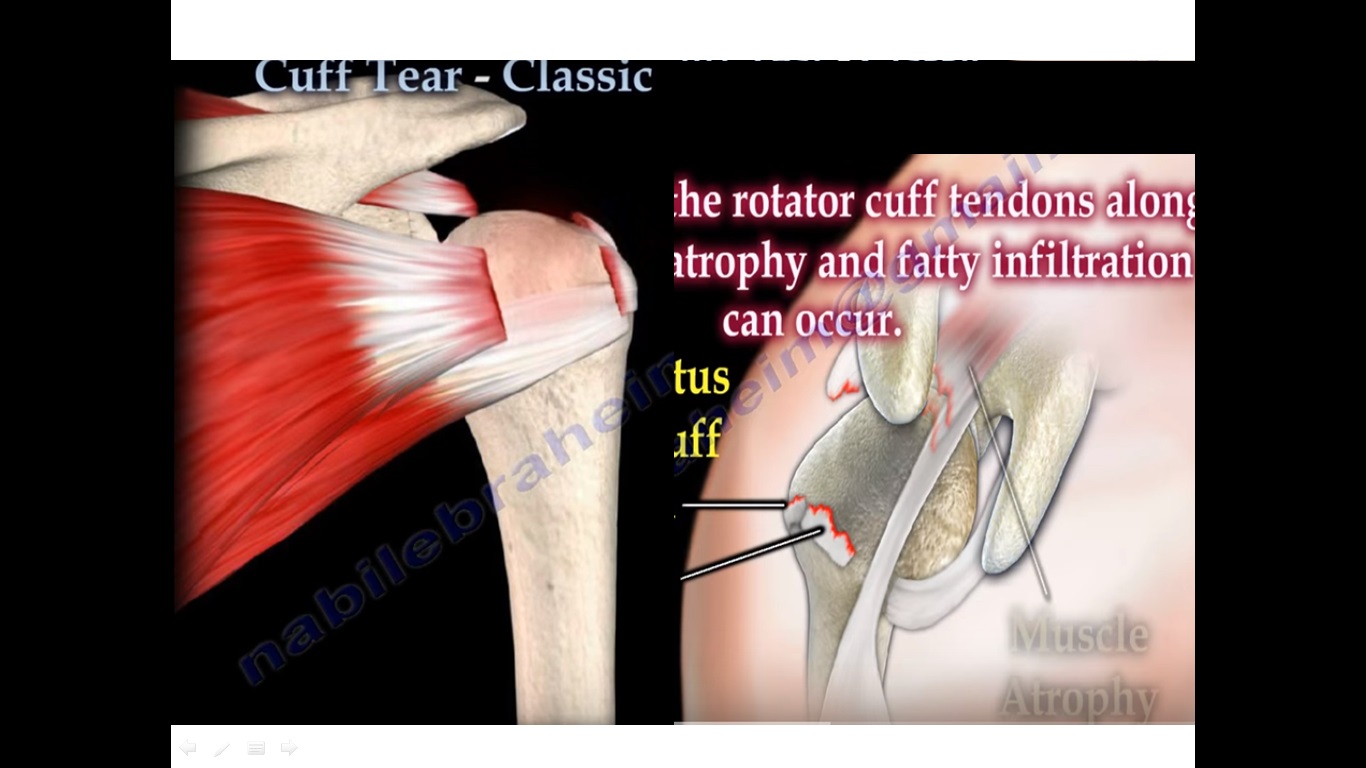 An MRI can also give your doctor a better idea of how old or new a tear is because it can show the quality of the rotator cuff muscles.
An MRI can also give your doctor a better idea of how old or new a tear is because it can show the quality of the rotator cuff muscles.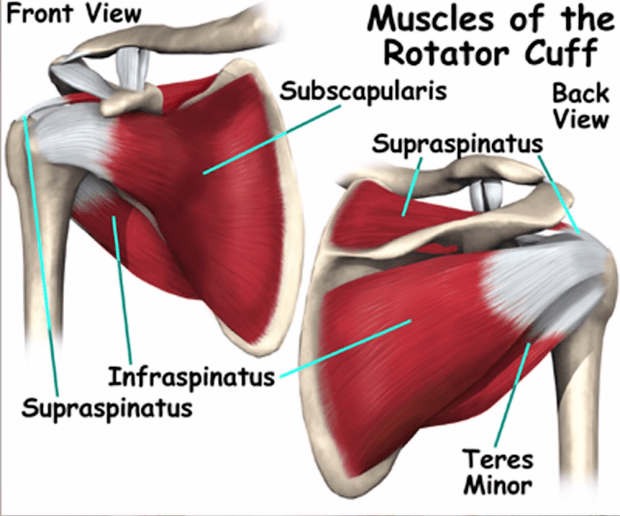 Cortisone is a very effective anti-inflammatory medicine; however, it is not effective for all patients. And if it is effective for you, there is no way to know how long the effects will last; it may be weeks, months, years, or possibly the rest of your life. On average, injections can be expected to provide pain relief in about two-thirds of patients for a period of at least 3 months.
Cortisone is a very effective anti-inflammatory medicine; however, it is not effective for all patients. And if it is effective for you, there is no way to know how long the effects will last; it may be weeks, months, years, or possibly the rest of your life. On average, injections can be expected to provide pain relief in about two-thirds of patients for a period of at least 3 months.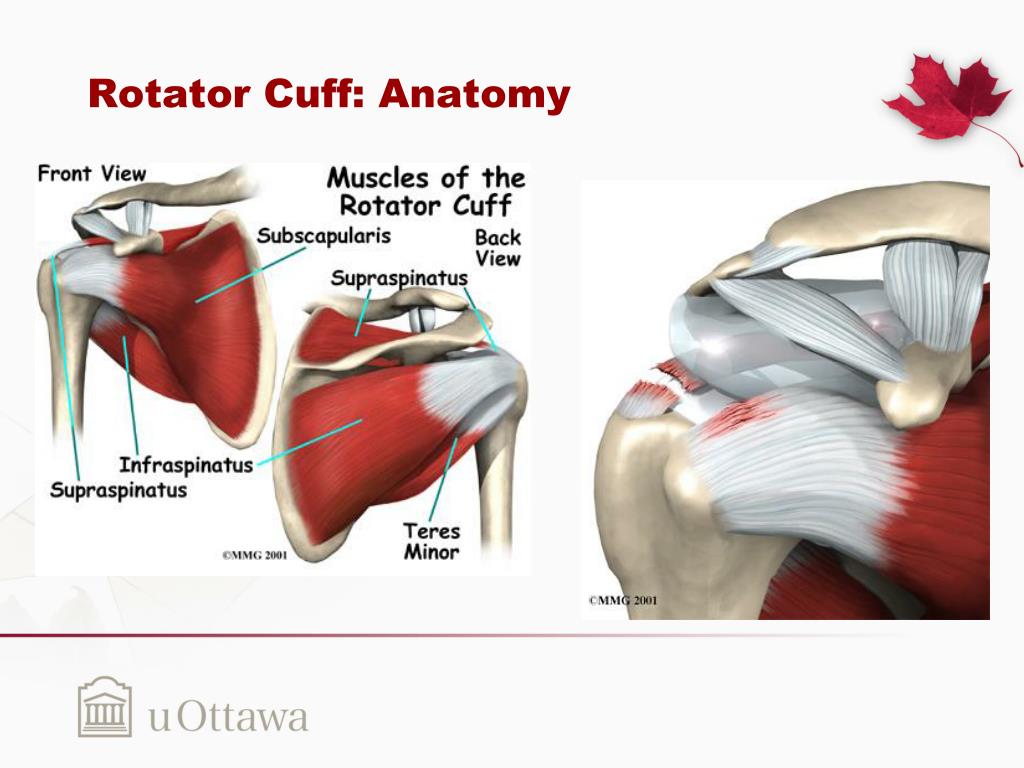 It allows you to lift your arms and reach up.
It allows you to lift your arms and reach up.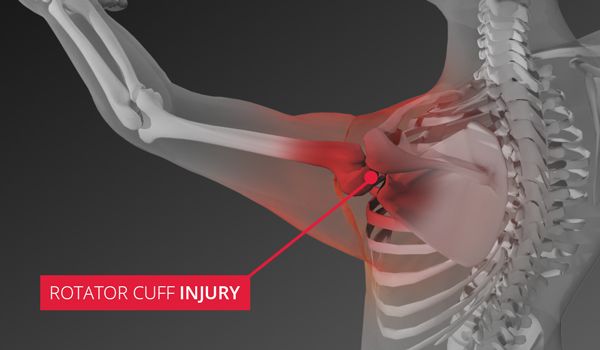
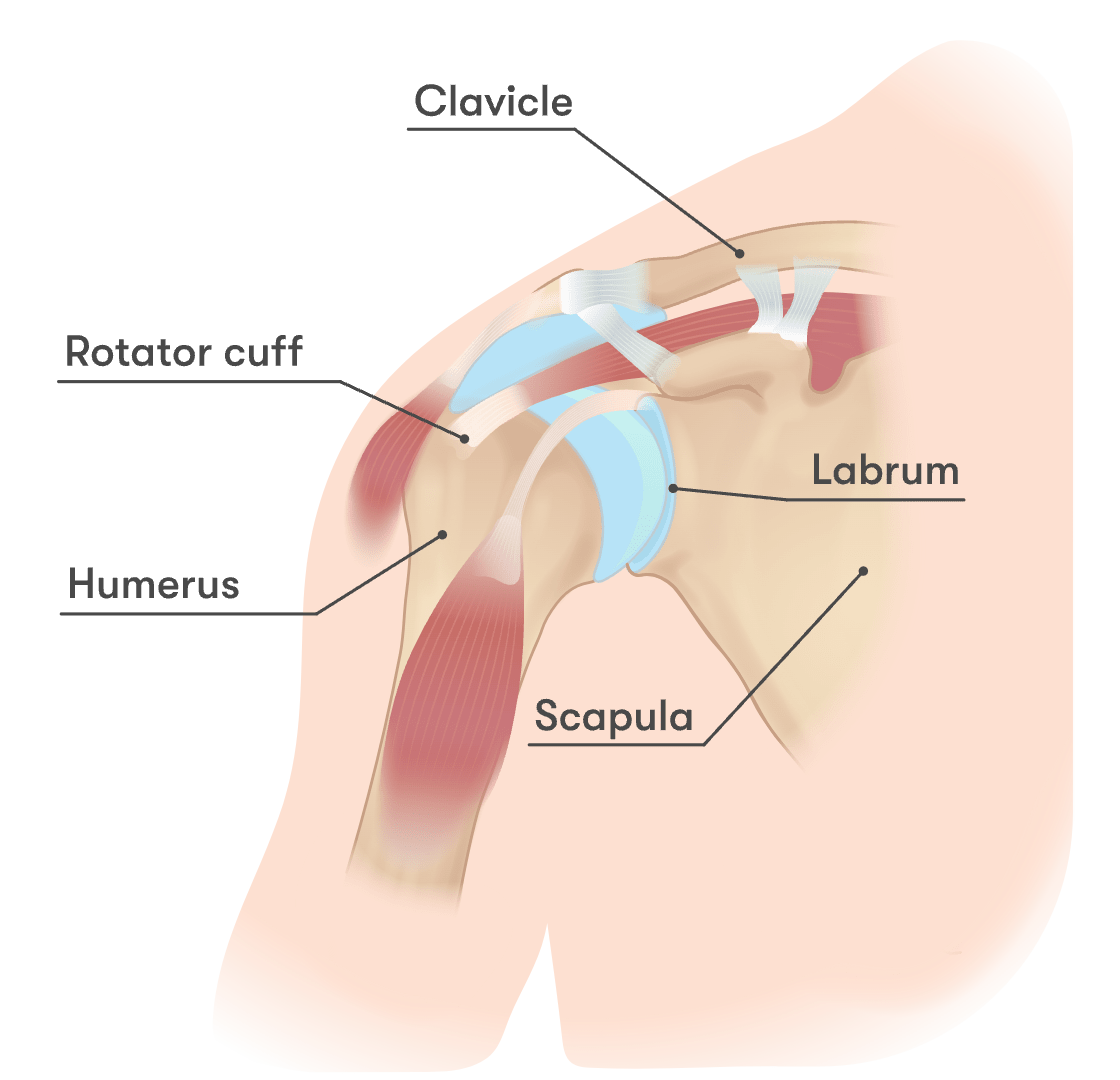
:max_bytes(150000):strip_icc()/armpainfinal-01-5c86a3fa46e0fb0001a0bebd.png)

